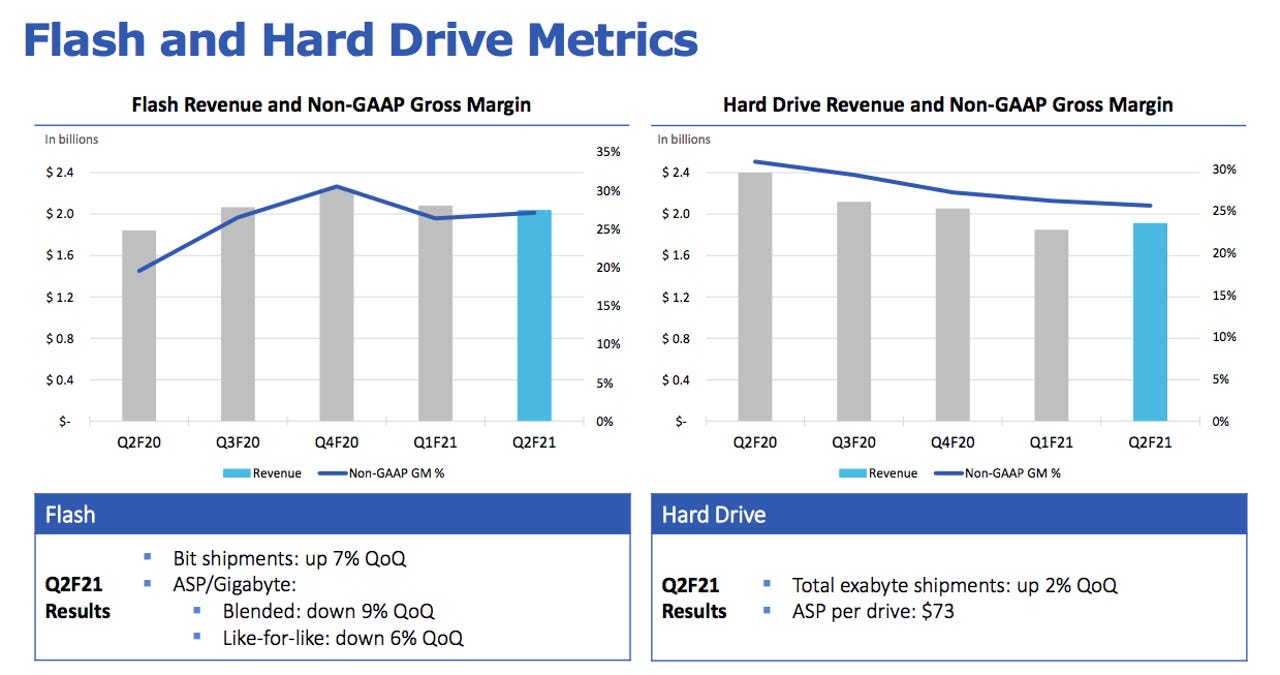Western Digital tops expectations, says hard drive revenue reached three-year high

Western Digital delivered better-than-expected second quarter financial results Thursday, buoyed by ongoing demand for PCs and hard drives. The company said revenue in its hard drive business reached a three-year high as remote work and distance learning trends drive retail demand for desktop and notebook computers.
The company reported a net income of $62 million, or 20 cents a share. Non-GAAP earnings were 69 cents per share on revenue of $3.9 billion, down 7% from a year ago. Wall Street was looking for earnings of 54 cents a share on revenue of $3.88 billion.
In the same quarter a year ago, Western Digital reported a net loss of $139 million, or 47 cents a share, on revenue of $4.23 billion.
Shares of Western Digital were up over 7% in late trading.
By category, Western Digital said revenue from client devices in second quarter came to $2.1 billion, up 19% from a year ago. Its client solutions division rang up $1 billion in revenue while data center devices and solutions revenue came to $807 million.

Elsewhere on the balance sheet, Western Digital said it generated approximately $425 million in cash from operations during the second quarter.
For Q3, Wall Street expects Western Digital to report revenue of $3.88 billion and non-GAAP earnings of 64 cents per share. Western Digital responded with Q3 revenue guidance in the range of $3.58 billion to $4.05 billion, with diluted earnings per share between 55 cents and 75 cents.
In prepared remarks, Western Digital CEO David Goeckeler said the company was focused on ramping up its next-generation product line throughout 2021, while also continuing to work on "adapting our business and technology portfolio to take advantage of the immense opportunities in the storage industry."